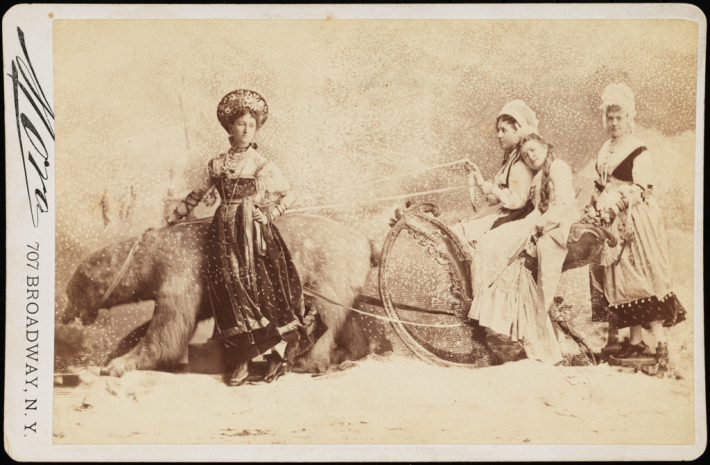
In the past few years, numerous websites and blogs have sprung up featuring some very uncomfortable family moments in awkward and embarrassing holiday and vacation portraits. These sites are definitely great for a good laugh, but there’s nothing really special about any of the people in the photos (other than the fact that they are, um, eccentric).
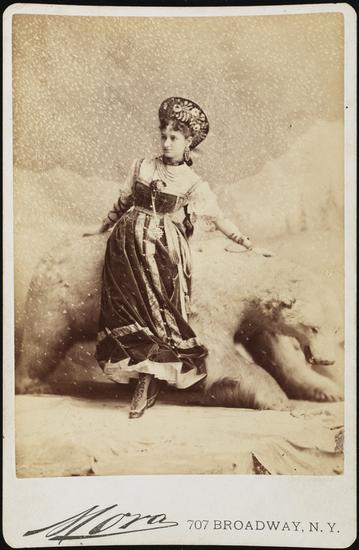
During the Gilded Age of New York City, when cabinet card photographs were in vogue, it was not unusual to find some very awkward portraits in the Victorian parlor.
Oftentimes, these portraits featured members of high society posing in bizarre costumes and stances, or with taxidermic animals at their sides (braces and stands were available to help humans remain motionless for long exposure times, but animals couldn’t be made to stay still that long).
Jose Maria Mora
One of New York’s pioneers in photographic portraits during this time was Jose Maria Mora, a young Cuban refugee who studied painting in England and Paris. Mora came to New York during the Cuban uprising in the 1860s, and began his career as a portrait photographer at Napoleon Sarony’s photography studio at 680 Broadway, which was then the most artistic and respected studio in the city.
Mora opened his own studio at 707 Broadway in 1870, which he filled with over 150 hand-painted backgrounds and all kinds of props for his clients, including ornate headdresses and hats and papier-mache columns, balustrades, and rocks. By 1878, Mora was making $100,000 a year creating portraits for the aristocrats of the upper class and the stars of opera and stage.
Born into one of the wealthiest planter families of colonial Cuba, Mora was able fit right in with the upper classes of New York. As the photographer of choice among the well-to-do, it was no surprise, then, that Mrs. Vanderbilt chose him to document one of the most memorable social events in the history of New York with some very beastly portraits.
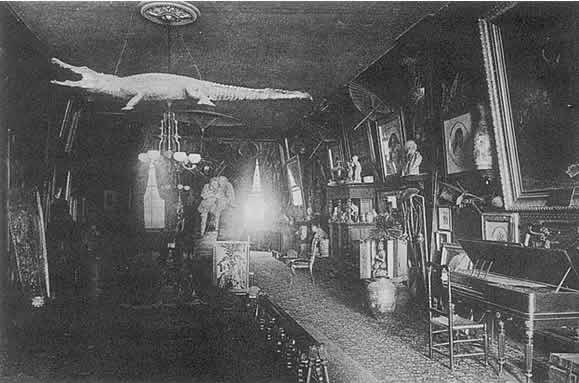
Mrs. Vanderbilt’s “Fancy Dress Ball” of 1883
In the early spring of 1883, everyone who was anyone in New York City’s high society was summoned to attend a fancy dress ball at Mr. and Mrs. William K. Vanderbilt’s new mansion at 53rd Street and Fifth Avenue. The invitations stipulated that everyone dress in costume — all the guests went above and beyond to comply with Mrs. Vanderbilt’s orders.
The ball, which took place on March 26, 1883, was one of the most incredible parties that New York had ever seen (C.K.G. Billings’ opulent Horseback Dinner was still 20 years away).
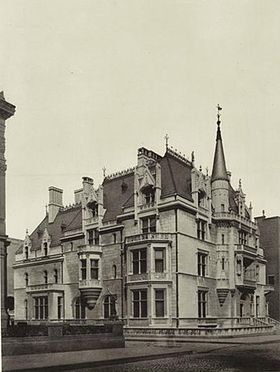
The carriages began arriving at 660 Fifth Avenue around 10:30 p.m., setting the scene for what was probably comparable to today’s world premiere of Tim Burton’s Alice in Wonderland or Lady Gaga arriving at the American Music Awards. As almost a thousand of New York City’s well-to-do emerged from their carriages, crowds of common folk, held back by police, strained to catch glimpses of these Victorian pirates, knights, queens, and fairies.
The Beastly Costumes
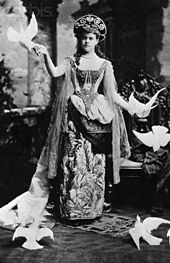
Although Louis XVI was the most popular costume with the men that year, and fairy-tale characters like Little Bo Peep and Little Red Riding Hood were fashionable with the ladies, many of the female guests chose to dress up as birds, insects, and other creatures.
Mora’s camera captured these critter creations on deluxe cabinet cards, many of which still survive in the vast portrait collections of the Museum of the City of New York.
Mrs. Ada Smith, the sister of Mrs. Vanderbilt, went as a peacock, complete with a waist made of a real peacock’s breast and a train covered in real peacock feathers.
Mr. Vanderbilt’s sister, Mrs. Seward Webb, went to the ball dressed as a hornet, wearing a yellow satin waist with a brown velvet skirt and brown gauze wings (her imported headdress was made of diamonds). Another woman dressed as a wasp with horizontal stripes of black and yellow, and yellow gloves with black stripes.
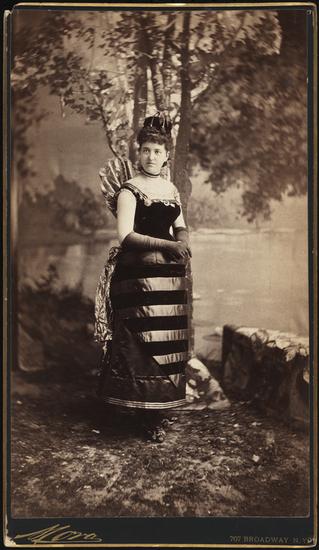
If you thought my story about the cat farm was offensive, then you’ll agree that one of the most outlandish and disturbing costumes was worn by Miss Kate Fearing Strong, who went to the ball as her nickname, Puss.
This hideous costume featured an overskirt made of seven white cats’ tails sewed on a dark background and a bodice with rows of white cat heads. The headdress was a stiffened white cat’s skin with a taxidermic cat head.
The only nice touch was a blue ribbon inscribed “Puss,” which hung from a bell that she wore on a choker that unfortunately was not tight enough. Check out her portrait below.
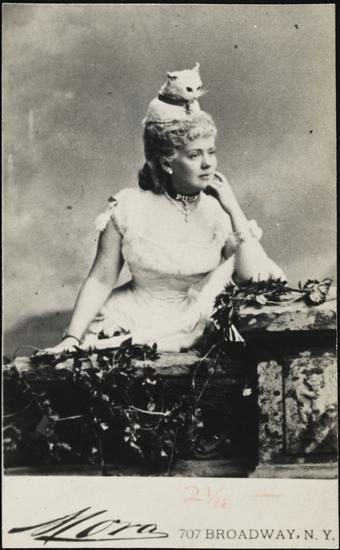
In addition to the costumes, the ball also featured six organized quadrilles (a dance for four couples) as follows:
The Hobby-Horse quadrille, the Mother Goose quadrille, the Opera Bouffe, the Star quadrille, the Dresden China quadrille, and the Go-as-You-Please.
The dancers organized in the gymnasium on the third floor (a 50 x 35 foot room that was used as an indoor play area for the Vanderbilt children) and then proceeded down the grand stairway and into the grand dining hall. They danced to the music of Gilmore’s Band.
Of particular interest was the Hobby-Horse quadrille, in which the men and women wore life-size “horses” around his or her waist. The horses, which took workmen two months to construct, had genuine hides, bright eyes and flowing manes and tails. The dancers wore red hunting coats and white satin knee britches or skirts and stockings. False legs hung on the outside of richly embroidered blankets to make it appear as if the dancers were riding the horses.
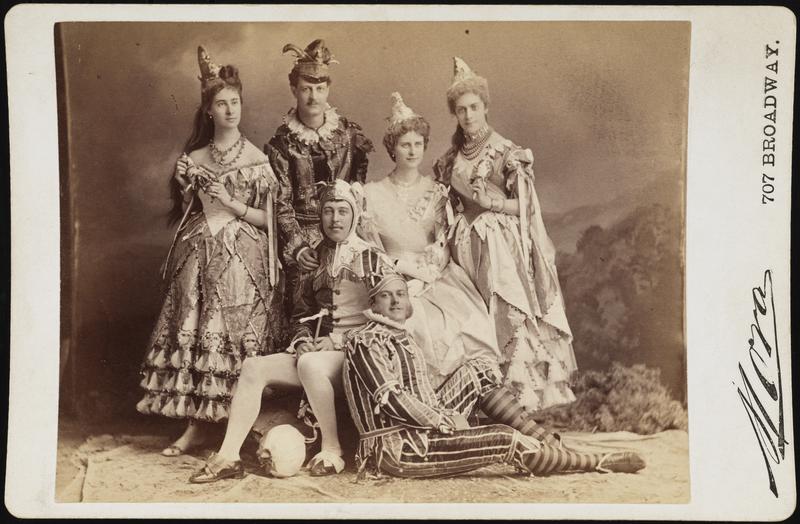
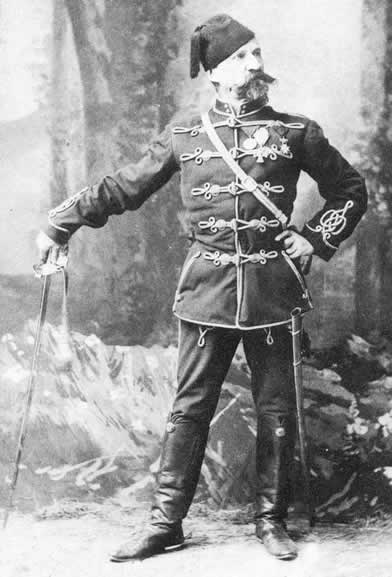


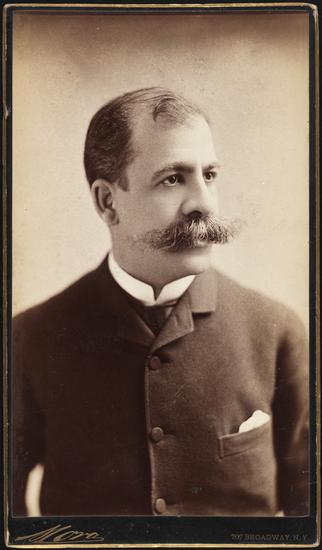


That cat costume is enough to give me nightmares. “Puss” deserved a good scratching.